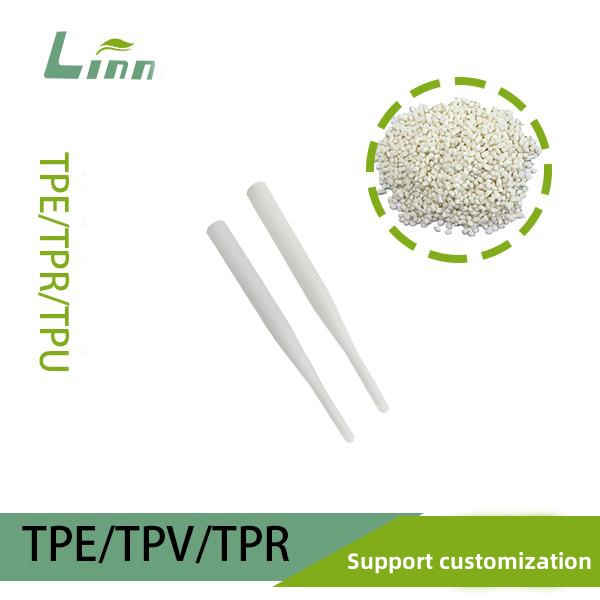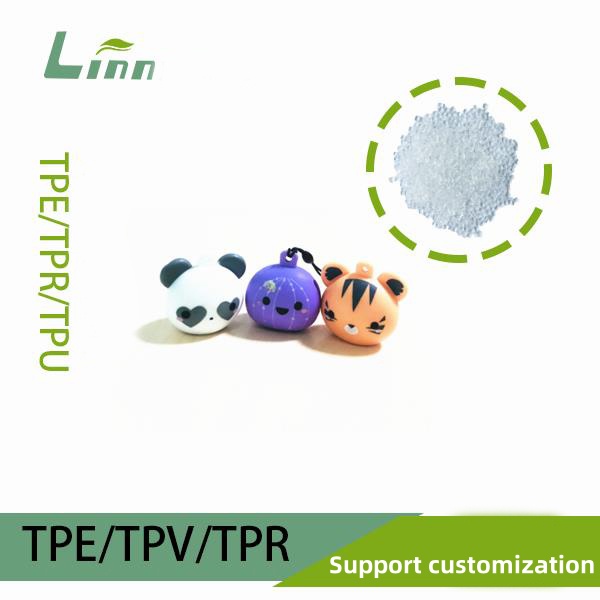Hey there! If you’re reading this, chances are you’re knee-deep in a project involving TPE (Thermoplastic Elastomer) soft material, and it’s sticking to your machine like gum on a shoe. I’ve been in the plastics game for over a decade, tweaking machines and troubleshooting stickiness more times than I can count. Today, I’m here to share everything I’ve learned about getting that TPE to behave—smooth, non-sticky, and ready to roll. Whether you’re molding parts, extruding profiles, or just trying to keep your sanity, I’ve got you covered. Let’s dive into the nitty-gritty of machine adjustments and make your TPE work like a dream.
What’s Going On with TPE Stickiness?
First off, let’s get on the same page. TPE is this amazing soft, rubbery material that’s super versatile—think phone cases, grips, or medical tubing. But when it’s too sticky, it clings to molds, screws, or dies, gumming up production faster than you can say “downtime.” I’ve seen it happen on my own shop floor: parts that won’t release, machines that need constant cleaning, and a whole lot of frustration.

The stickiness usually comes from a few culprits: temperature’s too high, the material’s formulation is off, or the machine settings just aren’t dialed in. My go-to fix? Adjust the machine step-by-step until that TPE slides out like butter. Here’s how I do it.
Step-by-Step: Tuning Your Machine for Non-Sticky TPE
I’ve spent years fiddling with injection molding machines, extruders, and everything in between. Here’s my playbook for getting TPE to stop sticking, based on real-world messes I’ve cleaned up.
Step 1: Check Your Temperature Settings
Temperature is king when it comes to TPE. If it’s too hot, the material gets tacky and loves to cling. I start by checking the barrel zones—usually 160-200°C works for most TPE grades, but it depends on what you’re using. Linn’s TPE, for instance, flows beautifully around 180°C in my experience.
Barrel Zones: Lower the temp by 5-10°C increments. Watch how the material behaves—too cold, and it won’t flow; just right, and it stops sticking.
Mold/Die Temp: Keep it cooler than the barrel, around 20-40°C. I’ve found a chilled mold makes a huge difference in release.
Pro tip: Use an infrared thermometer to double-check. I’ve burned my fingers learning that “feels hot enough” isn’t precise enough.
Step 2: Tweak the Screw Speed
The screw speed controls how fast the TPE moves through the machine. Too fast, and it doesn’t have time to settle—hello, sticky mess. I usually run my screw at 50-100 RPM, but it’s trial and error based on your setup.
Slow it down a bit if you see buildup on the screw or die.
Watch the back pressure—keep it low, around 50-100 psi, so the material doesn’t overheat from friction.
I once had a job where the screw was spinning like a top, and the TPE was a gooey nightmare. Dropped the RPM, and it was like flipping a switch—smooth sailing.

Step 3: Adjust the Cooling Time
Cooling is where stickiness often rears its head. If the TPE doesn’t set properly before ejection, it’ll smear everywhere. I extend the cooling cycle by 5-10 seconds and test. For thin parts, 15-20 seconds might do; thicker ones might need 30-40 seconds.
Use air blowers or water channels if your machine has them. I’ve rigged up a fan in a pinch—works like a charm.
Check the part’s surface. If it’s glossy and tacky, give it more time to chill.
Step 4: Fine-Tune the Pressure
Injection or extrusion pressure can make or break your TPE’s behavior. Too much pressure packs the material in too tight, making it stick; too little, and it won’t fill properly. I aim for 500-800 psi on injection, adjusting based on part size.
Lower the holding pressure by 10-20% if parts are sticking to the mold.
For extrusion, ease off the die pressure—watch for a smooth, even flow.

Step 5: Lubricate (But Sparingly)
Sometimes the machine itself needs a little help. I’ve used mold release agents—silicone-based ones are my favorite—applied lightly to the mold or die. A thin coat every few cycles keeps things slick without gunking up the works.
Don’t overdo it—too much release agent can mess with the TPE’s finish.
Clean the mold regularly. I’ve seen old residue turn a good run into a sticky disaster.
Step 6: Test and Repeat
Every TPE batch is a little different, even from the same supplier. I run small test shots or short extrusion runs, tweaking one variable at a time—temp, speed, pressure—until it’s perfect. Patience here saves hours of cleanup later.
Machine Settings Cheat Sheet
Here’s a table I keep handy for quick reference. These are starting points—your machine and TPE might need some wiggle room.
| Parameter | Recommended Range | Notes |
|---|---|---|
| Barrel Temperature | 160-200°C | Lower if sticky, raise if sluggish |
| Mold/Die Temperature | 20-40°C | Cooler = less stick |
| Screw Speed | 50-100 RPM | Slow down for better control |
| Injection Pressure | 500-800 psi | Adjust per part thickness |
| Cooling Time | 15-40 seconds | Longer for thicker parts |
| Back Pressure | 50-100 psi | Keep low to avoid overheating |
Why Does TPE Get Sticky in the First Place?
I’ve had this chat with plenty of folks on the shop floor. Stickiness comes down to chemistry and physics. TPE’s soft, elastic nature means it’s got a low surface energy—great for flexibility, bad for letting go of metal surfaces. Heat makes it worse by softening the polymer chains, and overprocessing can break down additives that keep it slick.
Linn’s TPE is pretty forgiving, though. I’ve noticed their formulations have a nice balance of slip agents—those little helpers that reduce tackiness. Still, no material’s perfect out of the box; it’s all about how you handle it.

My First Sticky TPE Nightmare
Let me tell you about my first run-in with sticky TPE. I was molding grips for a client, and the parts wouldn’t pop out of the mold—stuck like glue. I cranked the heat, thinking it’d flow better, but it just got worse. Mold release everywhere, swearing under my breath, the works. Finally, I dropped the barrel temp to 170°C, slowed the screw, and gave it an extra 10 seconds to cool. Boom—perfect parts. That day taught me more than any manual ever could.
Common Mistakes I’ve Made (So You Don’t Have To)
I’ve botched enough runs to know the traps:
Cranking the heat too high: Melts the TPE into a tacky blob. Start low and creep up.
Ignoring the mold surface: Rough molds grab TPE like Velcro. Polish them if you can.
Skipping test runs: Every batch is unique. I’ve wasted days assuming “it’ll be fine.”
Overusing release agents: Looks great for an hour, then clogs the machine.

How Do You Know You’ve Nailed It?
When the TPE’s dialed in, you’ll feel it. Parts eject clean, no residue on the mold, no stringy bits hanging off. The surface should be smooth, not tacky to the touch. I test by running my finger over a cooled part—if it doesn’t grab, I’m golden.
For hard proof, measure cycle time and scrap rate. A good setup cuts both down. I’ve had runs where scrap dropped from 20% to 2% just by tweaking temp and pressure—numbers don’t lie.
Does Machine Type Matter?
Oh, absolutely. I’ve worked with injection molders (think Arburg or Engel) and extruders (like Davis-Standard), and each has its quirks. Injection machines need tighter temp control—barrel zones are your best friend. Extruders are more about screw speed and die design. I’ve even tweaked a cheap desktop extruder for small TPE jobs; same principles, just less horsepower.
Additives: A Quick Fix?
Sometimes the TPE itself needs a boost. I’ve mixed in slip agents like erucamide (about 0.5-1% by weight) when stickiness wouldn’t quit. It’s like adding oil to a squeaky hinge—smooths things right out. Check with your supplier first, though—Linn’s team can tell you if their TPE’s already loaded with additives.
Maintenance Tips to Keep It Smooth
A sticky TPE run often points to a dirty machine. I clean my molds and screws every few hundred cycles—warm water, mild detergent, and a soft brush. For buildup, a quick solvent wipe (check compatibility!) does the trick. A clean machine is a happy machine, and I’ve learned that the hard way.

Final Thoughts
Getting TPE to stop sticking is part art, part science, and a whole lot of patience. I’ve spent countless hours tweaking settings, cursing at molds, and celebrating when it finally clicks. Start with temperature, play with speed and pressure, and don’t be afraid to experiment. With Linn’s TPE and a little elbow grease, you’ll have a setup that churns out perfect, non-sticky parts every time. Got a tricky run? Let me know—I’m happy to brainstorm with you.
Q&A: Your Top Questions Answered
Q: What if my TPE still sticks after all this?
A: Double-check the material grade—some TPEs are stickier by nature. I’ve swapped to a harder durometer (like 60A instead of 40A) when all else failed. Call your supplier for a sample tweak.
Q: Can I use talc or powder to reduce stickiness?
A: I’ve tried it—works short-term but gunks up the machine. Stick to release agents or additives instead.
Q: How often should I adjust settings?
A: Every new batch or mold change. I tweak maybe once a week on long runs—keeps things consistent.
Q: Is Linn’s TPE different to work with?
A: Not really—it’s just reliable. I’ve had fewer surprises with their granules compared to others I’ve tried over the years.
There you go—my full playbook for tuning a machine to handle non-sticky TPE. It’s a journey, but once you get it, it’s like riding a bike. Drop your questions below, and I’ll jump in with what I know. Happy molding!





